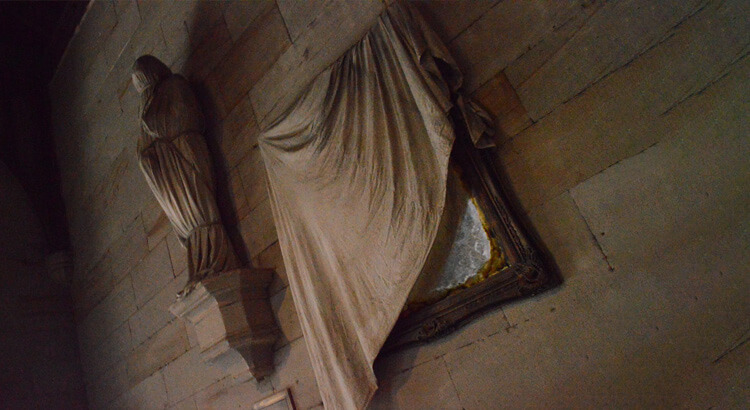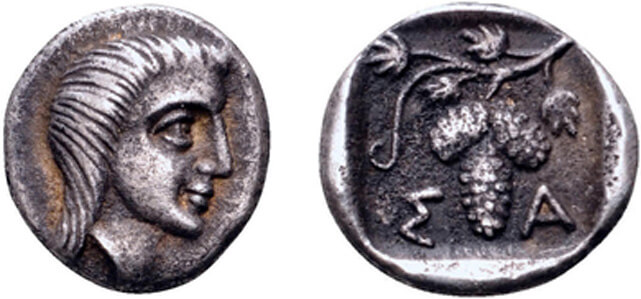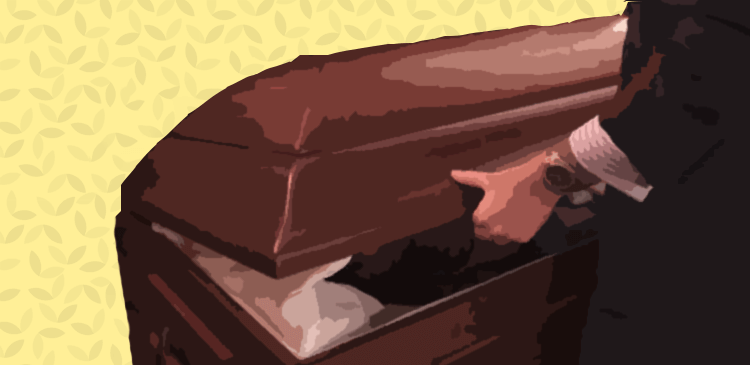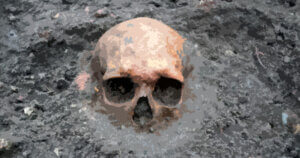The deceased’s face is sometimes covered before the casket is closed to protect it from the inside lid of the casket. If the face does not need protection, it may still be covered at the funeral as a gesture of comfort, out of respect for the body, or due to Catholic tradition.
That’s the short answer.
The longer answer involves Greeks, ghosts, and Catholic bishops.
Read on if you want to hear it.
In This Article
As a Result of Pagan Superstitions and Greek Customs
Pagan Superstitions
Like with wakes, many of today’s funeral industry traditions can, in some ways, be traced back to Celtic pagan origins.
Pagan’s believed that the soul leaves through the mouth.
Their thinking was that when a dead person took their last breath, their soul would leave their body. If their mouth was left open or uncovered after the soul had departed, spirits or ghosts might try to enter or possess the body through the mouth, and the deceased’s soul might have difficulty passing through to the afterlife.
The pagan’s solution was to cover the face and mouth of the deceased’s body. Over time this superstition expanded into the covering of mirrors and the closing of windows to guide the deceased’s soul – and in some places, these rituals continue today.

Greek Customs
The ancient Greeks and Romans had a common practice that centered around the mouths of dead bodies.
The Greek custom involved placing the coin (known as “Charon’s obol“) into the mouth of the deceased before they were buried. The coin’s purpose was to “bribe” the Greek “God” Charon to allow the departed soul to enter the afterlife.
Both the Pagan and Greek customs have developed into modern mourning and burial practices and grieving processes.

Due to the Region and Religion of the Deceased
While covering the body’s face before the casket is locked and sealed happens at some funeral services, it doesn’t happen at all of them.
In fact, it doesn’t happen at most of them.
As part of my research for this article, I called a few funeral homes here in New Zealand to ask about this. Most of the people I spoke to sounded bewildered by the question: “We don’t cover the faces after the embalming process… I don’t really follow the question…”
I used my Skype account to call some American funeral homes, and they mostly told me the same. There were a few other exceptions (which I will explain below), but the main one that stood out to me was a Catholic funeral director based in Pennsylvania.
He explained that covering the face is a big deal for some Catholics, especially more traditional ones. Sometimes families will create custom cloths with patterns meaningful to their deceased loved one.
He explained that while there are regional exceptions, covering the face can be a way of showing respect and a gesture of comfort. This comes from the tradition of the pallbearer placing a heavy cloth over the closed casket.
Covering the face can be a way of showing respect and a gesture of comfort.
I spoke to another Catholic funeral home in a different state, and they had no clue what I was talking about. One of them did mumble something about communion (which, funnily enough, also derives from Charon’s obol) and expressed that it’s ultimately down to what the family requests.
Given that Pope John Paul II’s face was covered in his casket before it was closed, it is clear that religion and region are pretty significant factors in when a deceased person’s face will be covered.
To Protect the Deceased’s Face
Returning to the “other exceptions” that were explained to me by the accommodating morticians of the Southern USA:
The final reason a body’s face might be covered before the casket is closed is to protect it.
At open casket funerals and viewings, the entire body is wearing clothes but otherwise uncovered so that friends, family, and guests can pay their respects and process their loss.
However, once the body is buried, there is obviously no longer a need to see the face.
Over time, coffins underground will decompose and eventually collapse. Covering the face before closing the casket adds an extra layer of protection and dignity for the deceased’s face and can act as a symbolic final goodbye.
The Bottom Line
The face is not always covered before the casket is closed at funerals, but when it is, you can know there are good reasons for it.
Whether the face is covered is up to you if you are planning a funeral. If it’s something you’re struggling with during a difficult time, it might be something discussing with your family, a religious leader, or your funeral director.
If you have any further questions about funerals, caskets, or anything beyond life, please feel free to leave a comment below.












4 Responses
Wow, could he show more disdain for the Catholics? I don’t know why they do what they do either, but to write about them in such a mocking way is so juvenile. And to compare their communion to the pagan coin thing with zero evidence or explanation is ignorance to the point of hateful. Have some respect for faiths we don’t understand.
Hi Katie,
Thank you for your comment.
I can assure you I had no intention of being hateful or mocking towards Catholics. I do try to add a bit of humor, but please do not mistake that for disrespect.
Many different religions and cultures have different traditions. The purpose of the article is to explore how the face covering tradition came about. In the Western world, Catholics were the only group where I found this was a common thing.
I provide a link to a anthropology study I found connecting communion to the Charon’s Obol in the article, you can see the abstract for that study here: https://red.library.usd.edu/idea/74/
“Charon’s Obol was a way of preparing the soul for its journey into the afterlife, a practice which has bled into other religions in various ways, such as communion in Catholicism.”
Why did *****’s Funeral Home in Apopka, Florida was charging me $150.00 to see my sister’s remains when I wanted to see her before making funeral arrangements? Is this against the law? I felt like ***** ***** was heartless and money hungry, where is her empathy being a owner of this establishment.
Hi Gwen,
That does not sound nice. I’m unsure as to whether it’s illegal, but it’s certainly morally lacking in my opinion. Funeral directors I have spoken to often make exceptions when it comes to charging these sorts of fees, especially when clients are not in a financial position to pay.
You may wish to report them to the Consumer Financial Protection Bureau and/or the FTC.